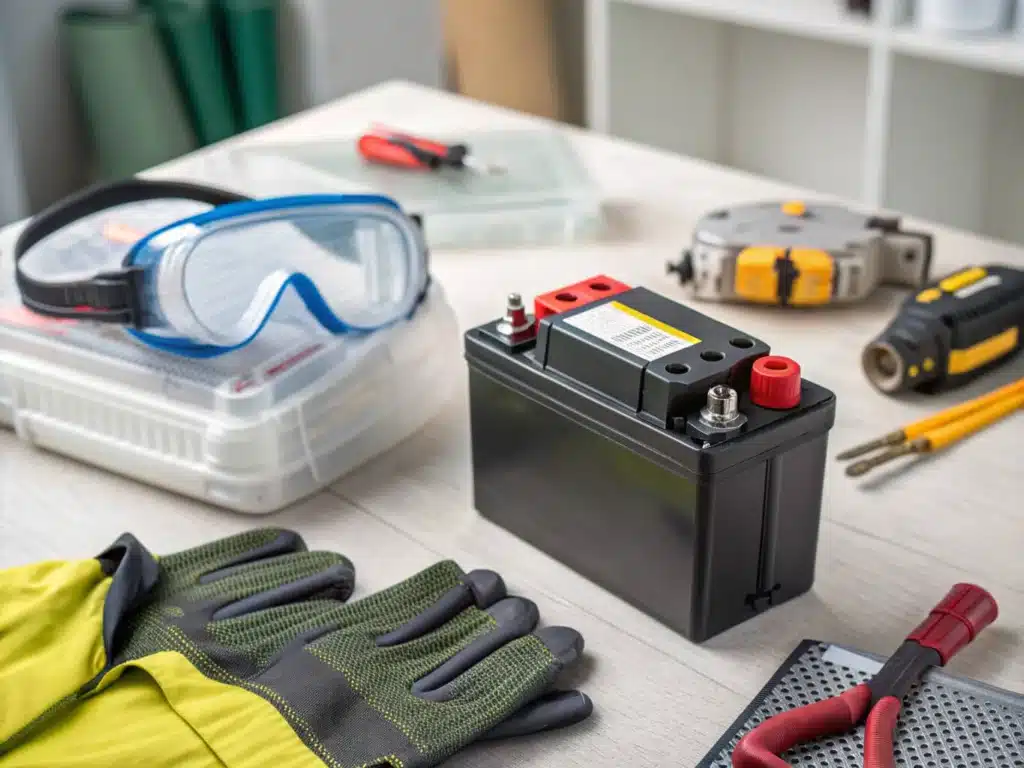Have you noticed that the edge of your phone screen is warped or the back cover of your laptop is bulging? Maybe you’ve even heard some news about batteries catching fire? These seemingly insignificant details may point to a serious problem – bulging lithium batteries. This is not just a trivial matter that affects the appearance, it is a safety alarm issued by the device, which is directly related to your property and even your personal safety.
Don’t worry, this article is a practical guide for you: we will help you quickly identify the signs of a bulge, understand why it happens, understand how big the potential danger is, and how to deal with it urgently and effectively prevent it.
Table of Contents
ToggleIdentify lithium battery bulge
It is important to detect battery swelling early. The following signs can help you quickly identify it. The most obvious is the physical change in the appearance of the device:

Deformed housing: Look for signs that your phone or electronic device is lifting from the edges, or if there is a noticeable bulge in the back cover. If it’s a laptop, check for bulging in the touchpad or keyboard area.
Gaps between components inside the device: If abnormal gaps appear between components that were originally tightly fitted, it is likely caused by internal battery expansion.
The battery itself is expanding: If your battery is removable, take it out and observe it. Any visible expansion and deformation is a bulging phenomenon.
In addition, there are some subtle signs that are not obvious but are equally worth noting:
Difficulty closing the battery cover/back cover: If your device’s battery cover used to be easy to close, but now becomes difficult to close, the battery may be swollen.
Difficulty inserting and removing the battery: For removable batteries, if it feels much more difficult to insert or remove than before, you should also pay special attention.
Sometimes, abnormal heating of the device or a sudden and significant drop in performance may also be caused by a battery swelling problem. Although this may not be a direct evidence of swelling, you should be vigilant when it appears in combination with other physical signs.
Why does lithium battery swelling
Simply put, the direct cause of battery bulging is the generation of gas inside it. Inside the lithium battery, complex chemical reactions are taking place to store and release electrical energy. But if something abnormal happens, the electrolyte begins to decompose and produce excess gas. Since the battery is sealed, these gases have nowhere to go, which will cause the internal pressure to rise, eventually propping up the battery shell, forming the bulging phenomenon we see.

The following are the specific causes of lithium ion battery swelling:
Overcharging: Continuously charging a battery beyond its designed charge cut-off voltage can severely destabilize the internal chemical composition and accelerate gas generation. This is probably caused by an unqualified or damaged charger.
High temperature: This is one of the main reasons. Whether using or charging in a hot environment, or storing the device in high temperature for a long time, these will accelerate the chemical reaction of the battery (including the production of gas side reactions), greatly increasing the risk of bulging.
Physical damage: If the device is hit, dropped, or squeezed, or the battery casing is accidentally punctured, it may damage the internal structure of the battery, causing an internal short circuit, which in turn leads to heat and gas generation.
Manufacturing defects: Although relatively rare, the battery may have minor flaws during the production process. These potential internal problems may be exposed after the battery has been used for a period of time, causing bulging.
Natural aging: Each lithium battery has its life span. As the number of charge and discharge cycles increases and time passes, the materials inside the battery will gradually age, performance will decline, and the chance of abnormal chemical reactions and gas generation will increase.
Deep over-discharge: Frequently discharging the battery completely, or leaving it at a very low charge for a long time, can sometimes cause additional stress on the battery when recharging it, increasing the risk of gas production.
Lithium battery swelling dangerous
If your device’s battery has shown signs of swelling, this is not just an appearance problem, it is a clear and serious safety alarm! Swelling means that the battery inside is already in an unstable state, which is accompanied by further risks.
Shell rupture and electrolyte leakage: The pressure from continued expansion may rupture the battery shell. The leaked liquid is generally corrosive or irritating, which may damage the internal components of the device or even irritate the skin or eyes.
Increased risk of battery short circuit: Deformation of the battery structure will increase the chance of positive and negative electrodes contacting each other and causing internal short circuits. Short circuits will quickly generate a lot of heat.
Thermal runaway is the most serious risk: it is the scariest potential consequence of a swollen battery. An internal short circuit or other unstable factors could trigger a series of uncontrolled chain reactions, causing the battery temperature to rise sharply, which could cause smoke, fire, or even explosion in extreme cases.
A bulging lithium battery is like a time bomb; its internal balance has been broken and more serious problems may occur at any time.
What to do with bulging lithium battery
Once you confirm that the battery is swollen, safety is your top priority. Please remain calm and follow the steps below immediately:
Stop using the device immediately. Stop using the device immediately, whether it is running or not. If the device is on, try to shut it down normally; if it cannot be shut down normally, do not force it.
Disconnect from the power source: Never charge a swollen device or battery! If it is charging, unplug the charging cable immediately.
Handle with care: If you need to move the device or battery, be gentle. Avoid squeezing, bending, dropping or hitting the battery, and prevent the battery from being pierced by sharp objects.
While ensuring your own safety, carefully move the swollen device or battery to a dry, cool, well-ventilated place away from flammable materials (such as paper, cloth, wood, alcohol, etc.).
It is strictly forbidden to charge, repair or deflate it, or throw it into ordinary trash cans. Please contact professionals as soon as possible to handle and recycle it.
How to prevent lithium battery bulging
After understanding the causes and dangers of bulging, we should pay more attention to how to take the initiative to prevent it. Developing good usage habits can greatly reduce the risk of lithium battery bulging.

Keep away from extreme heat: Do not use, charge or store mobile phones, tablets, power banks and other devices exposed to high temperatures for a long time. The best operating and charging temperature range for most lithium batteries is between 0°C and 45°C.
Develop good charging habits: Always use original chargers and data cables, or choose third-party brands that are reliable, certified, and have specifications that fully match the device, and avoid connecting the charger overnight or for long periods of time. Charge as you use, and keep the battery between 20% and 80% of its capacity.
Protect your electronic devices from strong drops, impacts or crushing.
If you plan to store it for a long time, it is recommended not to fully charge or fully discharge the battery.
Make it a habit to regularly check the appearance of your equipment to see if there are any slight signs of bulges or deformation. Early detection means early treatment.
Lithium batteries are consumables and generally have a service life of 2 to 3 years. If you feel that the battery life has significantly decreased, or the time it takes to fully charge has increased, you should consider whether it has aged. The risk of bulging and other problems with aged batteries will increase significantly, so you need to consider replacing them with new batteries.
How to dispose of bulging lithium batteries
Please do not discard swollen batteries into ordinary household trash cans! Not only will this cause serious environmental pollution (batteries contain harmful chemicals), but during transportation, damaged batteries are very likely to cause fires or explosions due to squeezing or damage, endangering the safety of sanitation workers and treatment facilities.
Contact the local environmental protection department or designated recycling point, and understand and strictly follow their instructions before delivery to ensure the safety of the entire process.
In short, do not discard it casually for the sake of convenience, and be sure to dispose of it through formal channels.
Conclusion
A bulged lithium ion battery is a clear danger sign. High temperature, incorrect charging/usage habits, and natural aging of the battery are the main causes of bulging. Once a bulge is found, it must be stopped immediately and initial treatment must be carried out in accordance with safety guidelines. It is essential to develop good battery usage and maintenance habits.
FAQs
No. A swollen battery poses a safety hazard and should be stopped immediately.
Abnormal. Any swelling may indicate a problem with the battery.
The more obvious the bulge, the higher the risk.
Possibly. Swollen batteries present a risk of explosion, especially if subjected to external force or high temperatures.
